Assertion [M(AA)3]n± is optically inactive
Reason Plane of symmetry and center of symmetry are not present .
If both (A) and (R) are correct and (R) is the correct explanation of (A) .
If both (A) and (R) are correct and (R) is the correct explanation of (A) .
If(A) is correct, but (R) is incorrect .
Both (A) and (R) are incorrect .
The correct Answer is:D
To analyze the assertion and reason provided in the question, we will break down the concepts of optical activity, coordination compounds, and symmetry.
Step 1: Understand the Coordination Compound
The coordination compound given is (M(AA)3)n+, where AA is a bidentate ligand. Since there are three bidentate ligands, the coordination number of the metal M is 6, which typically forms an octahedral geometry.
Hint: Remember that the coordination number indicates how many ligand atoms are bonded to the central metal atom.
Step 2: Draw the Structure
In an octahedral complex with three bidentate ligands, the ligands will occupy different positions around the metal center. Each bidentate ligand connects to the metal at two points.
Hint: Visualize the octahedral structure by placing the metal atom at the center and arranging the ligands around it.
Step 3: Analyze Optical Activity
For a compound to be optically active, it must not have a plane of symmetry or a center of symmetry. If we draw the mirror image of the compound, we need to check if the two structures are superimposable.
Hint: Consider how the arrangement of ligands affects the symmetry of the molecule.
Step 4: Check for Symmetry
In this case, if we draw the mirror image of the octahedral complex, we will find that the arrangement of the bidentate ligands leads to non-superimposable mirror images. This means that the compound does not possess a plane of symmetry or a center of symmetry.
Hint: Non-superimposable mirror images indicate optical activity.
Step 5: Conclusion on Assertion and Reason
The assertion states that (M(AA)3)n+ is optically inactive, which is incorrect because we found it to be optically active. The reason states that there is no plane of symmetry or center of symmetry, which is correct.
Final Conclusion:
- The assertion is false.
- The reason is true.
Final Answer:
Assertion is wrong, but the reason is correct.
The coordination compound given is (M(AA)3)n+, where AA is a bidentate ligand. Since there are three bidentate ligands, the coordination number of the metal M is 6, which typically forms an octahedral geometry.
In an octahedral complex with three bidentate ligands, the ligands will occupy different positions around the metal center. Each bidentate ligand connects to the metal at two points.
For a compound to be optically active, it must not have a plane of symmetry or a center of symmetry. If we draw the mirror image of the compound, we need to check if the two structures are superimposable.
In this case, if we draw the mirror image of the octahedral complex, we will find that the arrangement of the bidentate ligands leads to non-superimposable mirror images. This means that the compound does not possess a plane of symmetry or a center of symmetry.
The assertion states that (M(AA)3)n+ is optically inactive, which is incorrect because we found it to be optically active. The reason states that there is no plane of symmetry or center of symmetry, which is correct.
- The assertion is false.
- The reason is true.
Assertion is wrong, but the reason is correct.
Topper's Solved these Questions
- COORDINATION COMPOUNDSBOOK - CENGAGE CHEMISTRY ENGLISHCHAPTER - COORDINATION COMPOUNDSEXERCISE - Exercises Integer (Naming And Terminology)
16 Videos
- COORDINATION COMPOUNDSBOOK - CENGAGE CHEMISTRY ENGLISHCHAPTER - COORDINATION COMPOUNDSEXERCISE - Exercises Integer (Isomerism)
15 Videos
- COORDINATION COMPOUNDSBOOK - CENGAGE CHEMISTRY ENGLISHCHAPTER - COORDINATION COMPOUNDSEXERCISE - Exercises Single Correct (Application Of Coordination Compounds And Miscellaneous)
28 Videos
- CHEMICAL KINETICSBOOK - CENGAGE CHEMISTRY ENGLISHCHAPTER - CHEMICAL KINETICSEXERCISE - Archives Subjective
23 Videos
- D AND F BLOCK ELEMENTSBOOK - CENGAGE CHEMISTRY ENGLISHCHAPTER - D AND F BLOCK ELEMENTSEXERCISE - Archives Subjective
29 Videos
Similar Questions
Knowledge Check
Which of the following having plane of symmetry?
A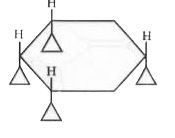 B
B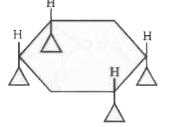 C
C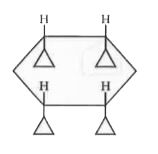 DAll of these
DAll of theseWhich of following compound has center of symmetry?
A B
B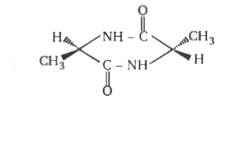 C
C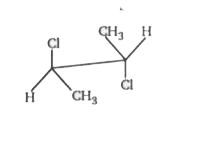 DAll of these
DAll of these
Which of the following has plane of symmetry:-
View SolutionIn crystalline solids, which of the following element of symmetry is not present ?
View SolutionFind plane of symmetry and centre of symmetry (if possible) in the following compounds.

View SolutionAssertion : Heterochromatin is genetically inactive.
Reason. : It lacks genes.
View SolutionA molecule having a plane of symmetry is a chiral molecule.
View SolutionWhat is meant by n-fold axis of symmetry?
View Solution
